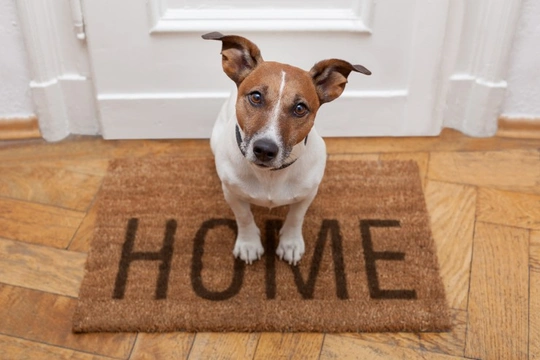
Some tips to make your new dog’s first month with your easier
When you decide to buy or adopt a new dog of any age, there is a lot of planning to be done before you even get as far as bringing your dog home! Going through the purchase or adoption process, dog-proofing your home, making sure that you have everything that you need, talking to the prior owner or adoption centre, and happily thinking about the fun that you and your new dog are going to have together will soon fill all of your waking hours!
As the day to bring your dog home gets closer, you will probably start looking at the logistics of the process, such as how you are going to transport your dog home, sorting out the journey, and preparing to welcome your new best friend into your family.
So you go to collect your dog, bring them home, settle in on the sofa with a cup of tea, and look at each other… What happens now? If you don’t have a better idea of this than your new dog, you’re probably going to run into some challenges!
In this article, we will look at some of the ways in which you can make your dog’s first month with you easier and more comfortable for both of you, settle your dog in, and start as you mean to go on. Read on to learn more.
Change is stressful for dogs
It can take many weeks or even months for your dog to settle in properly, bond with you fully, and think of you as their person and your home as their home too. Dogs do not take well to change, and even if your new pal appears to be bright, happy and loving getting to know you and their new home, remember that this is all new and strange for them, and their true personality and behaviour will not become established and apparent until they have fully settled in.
Even if your dog appears to be taking to everything like an old hand, it is important not to rush them or provide too much change and stimulus during the first month, as your dog will need to settle into their new life and routine with you.
Continuity
In order to help your dog to settle in, maintain as much continuity for them during their first month as possible. Keep feeding them the same food and only phase in any changes very gradually, and retain their normal mealtimes where possible. Try to take some of their familiar things home with them too, such as their toys, bed, and anything else that they particularly like, to help them to feel more at home.
On the first day
Once you get your new dog home, the first thing to do is introduce them to where they should go to the toilet, and give them the chance to do so. If possible, try to wait for them to go, and praise them warmly so that they understand that this is the right place for toileting, and learn to ask to go out when they need to. Never punish mistakes and accidents while your dog gets used to things, and give them lots of chances to go to the toilet until you get used to their normal routine and when they need to do their business.
Introduce your dog to every member of the family and make sure that they are warmly welcomed, but not overwhelmed. Keep friends and visitors who are keen to meet your new dog from visiting for a while, so that your dog is not faced with too much stimulus, and has the chance to get used to the family and begin to bond with them before they start meeting new people.
Establish a bed and space for your dog to sleep and relax in, show it to them, and try to make it appealing to them. Make a rule that your dog’s bed is a safe space for them, that they can retreat to without being disturbed, and make sure that all of the family respect your dog’s space.
Bonding with your dog
Ensure that you are available to your dog, being welcoming, kind and friendly and giving them every opportunity to approach you, come and sit with you, and see what you are doing. But do not force your dog into sitting with you if they need some time alone, and let your dog get used to you and their new environment in their own time and on their own terms.
Don’t let your dog get into bad habits and start as you mean to go on in terms of restricting certain behaviours such as begging or sleeping on your beds, but do not start intensive training or trying to change the nature of your dog’s behaviour until they have settled in.
How your dog reacts to things, comes across and behaves during their first month may well be very different to how they will act when they have settled in; for some dogs, minor behavioural problems may form a part of settling in, which will resolve themselves over time as your dog begins to view your home as their home.



